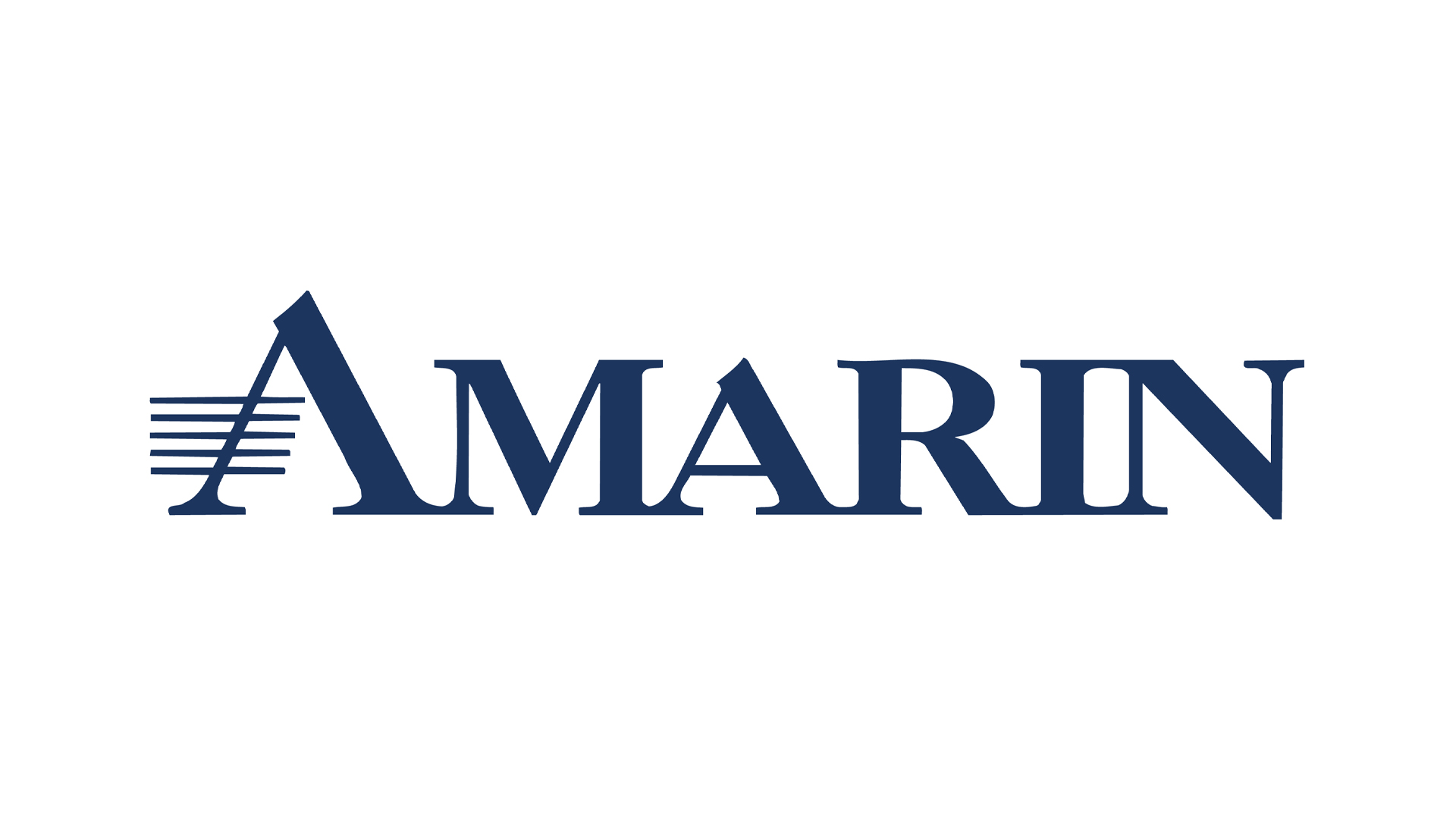
Laurent Abuaf, SVP and President Europe at Amarin, outlines the social and economic burden of CVD in Europe and the company’s key priorities for the year ahead to optimise cardiovascular disease prevention.
Laurent Abuaf, Amarin’s European President, provides his expert insights into the most critical issues affecting cardiovascular disease care in Europe and the need for fresh thinking.
What are the biggest challenges facing cardiovascular disease prevention in Europe?
The challenges of cardiovascular disease (CVD) have been exacerbated by COVID-19 in recent times, although with CVD, we face this major health problem every single year.
CVD remains a leading cause of death in Europe and worldwide1,2, accounting for 3.9 million deaths each year in Europe alone.3
Even with the current standards of care, high risk patients are still in danger of a cardiovascular event, all too often this risk is simply overlooked, and this remains one of the biggest challenges we must overcome.
While there is no silver bullet, there are effective treatment options. However, we need to look beyond the well-known and accepted low density lipoprotein cholesterol (LDL-C) pathway4,5, which has been effective at lowering cardiovascular risk. The challenge now is to evolve the practice of medicine to offer even more effective treatment combinations to minimise future cardiovascular risk.
There is an increasing body of evidence that has shown while treatments like statins are effective in reducing cardiovascular risk, they do not provide a complete solution. While drugs like statins have done an effective job at reducing cardiovascular (CV) risk through lowering LDL-C, a residual risk remains.5
This unmet need must be addressed, and innovative solutions brought forward. Healthcare professionals are traditionally trained to think about managing CVD as reducing classical risk factors through lowering blood pressure and LDL-C levels. This has been anchored by years of education on this approach. A rethink of CVD care is needed to help tackle this problem, and, as we learn more, new medical education is needed to support this.
CVD-related deaths are expected to rise to 23.6 million by 2036. What would you attribute this increase to?
The cost of CVD’s burden exceeds €210 billion a year in the European Union (EU) alone3 with both the health and economic burden of CVD set to grow exponentially in Europe and across the globe in the coming years.1,7
The rise in CVD death rates is complex and attributable to multiple factors.7 Firstly, there is the stalling death rate decline. While coronary heart disease (CHD) death rates have fallen markedly since the 1970s due to changes in diet, lifestyle and advancements in treatment intervention, there is growing evidence indicating that the decline in CVD deaths has stalled in recent years.8
A second important factor is the rising rates of obesity and diabetes. There is clear evidence to suggest that increases in Body Mass Index (BMI), and the incidence of diabetes in patients have contributed to an increased number of heart attacks and ischaemic strokes.9
While we still benefit from existing interventions such as LDL-C lowering and revascularisation activity, advances in medical treatment and prevention have been more gradual and incremental.8 While people who suffer from a heart attack may survive and live well into their 80s, many go on to develop and die of chronic heart failure.8
What interventions are needed to reduce the progression of cardiovascular events among high-risk groups?
One of the immediate priorities is tackling the critical care backlog created by the reprioritisation of resources during the COVID-19 crisis.10 In England, there was a 110-fold increase in people waiting over a year for potentially lifesaving heart procedures at the height of the pandemic.10
It is important that the lessons from the pandemic are taken into account, so that key underlying health conditions like CVD remain a top priority. That is why I am pleased that the UK National Health Service (NHS) are conducting the Cardiovascular Disease Prevention (CVDPREVENT) Audit, which will provide the primary care network with a more in depth understanding how patients with high-risk conditions such as diabetes and ischaemic heart disease are treated.11
We also need to rethink the current CVD treatment paradigm. It is time to look beyond simply controlling traditional risk factors like LDL-C. Multiple trials, for example, have shown that statin therapy reduces CV risk by 25% to 35%.5,12 However, up to a third of patients who experience a heart attack may have a subsequent CV event over the next seven years.13,14
What are some of Amarin’s main European achievements in 2021?
Looking back at 2021, it is safe to say that it was a historic year for the company. We have obtained multiple regulatory approvals in various European countries with more to follow in 2022. We established our European commercial hub in Zug, Switzerland and hired close to 250 new employees across Europe; and established a presence in Germany.
In Germany, we have recruited and trained a team of 180 people. In the pharmaceutical industry, expansion on this scale typically takes 36 months to reach; however, we have achieved this growth in less than a year. We are very pleased that our teams were able to establish a presence in Germany on such an expedited schedule, within the context of the COVID-19 pandemic.
Later in the year, we were also honoured to be one of three finalists for the Galenus von Pergamon Prize in Germany, which recognises and honours pharmaceutical innovation in 15 European countries and North America15. This year’s award went to BioNTech and Pfizer for their COVID-19 vaccine, but we were truly honoured to have been nominated for the award and keep such fantastic company.
What are Amarin’s top priorities for Europe 2022?
Our key priorities will be to continue expanding our presence in key markets to support high risk CV patients across Europe and accelerate our European go-to-market model using efficient omnichannel engagements.
We will also continue our healthcare professional educational efforts while further strengthening our presence across Europe. These are significant challenges, but we have a great team in place, and I am confident 2022 will be another historic year
for Amarin.
This article is initiated, developed and funded by
© Amarin Pharmaceutical Ireland Limited
March 2022 UK-NP-00079
References
- European Society of Cardiology (ESC). Cardiovascular Realities 2020. www.flipsnack.com/escardio/esc-cardiovascular-realities-2020/full-view.html. Accessed March 2022
- WHO. The top 10 causes of death. www.who.int/news-room/fact-sheets/detail/the-top-10-causes-of-death. Accessed March 2022
- European Heart Network. European Cardiovascular Disease Statistics 2017. ehnheart.org/cvd-statistics/cvd-statistics-2017.html. Accessed March 2022
- Ballantyne CM. Bays HE. Kastelein JJ. et al. Efficacy and Safety of Eicosapentaenoic Acid Ethyl Ester (AMR101) Therapy in Statin-Treated Patients With Persistent High Triglycerides (from the ANCHOR Study). Am J Cardiol. 2012:110(7):984-92
- Ganda OP, Bhatt DL, Mason, RP et al. Unmet Need for Adjunctive Dyslipidemia Therapy in Hypertriglyceridemia Management. J Am Coll Cardiol. 2018:72(3):331
- WHO. Cardiovascular Diseases. www.who.int/nmh/publications/fact_sheet_cardiovascular_en.pdf. Accessed March 2022
- Roth GA, Mensah GA, Johnson CO, Addolorato G et al. Global Burden of Cardiovascular Diseases and Risk Factors, 1990-2019: Update From the GBD 2019 Study. J Am Coll Cardiol. 2020:22:76(25):2983
- Mensah A, Wei G, Sorlie P et al. Decline in Cardiovascular Mortality: Possible Causes and Implications. Circ Res. 2017:120(2):366–380:2
- The New Scientist. Rising BMI and Diabetes Have Stalled the Decline of Heart Disease. www.newscientist.com/article/2281227-rising-bmi-and-diabetes-have-stalled-the-decline-of-heart-disease/. Accessed March 2022
- British Heart Foundation: How the Pandemic is Taking its Toll on People with Heart and Circulatory Conditions. bhf.org.uk/informationsupport/heart-matters-magazine/news/coronavirus-and-your-health/pandemic-effect-on-heart-patients. Accessed March 2022
- NHS Digital. Cardiovascular Disease Prevention Audit (CVDPREVENT). digital.nhs.uk/services/general-practice-gp-collections/service-information/cardiovascular-disease-prevention-audit-cvdprevent. Accessed March 2022
- Boekholdt SM, Hovingh GK, Mora S, et al. Very low levels of atherogenic lipoproteins and the risk for cardiovascular events a meta-analysis of statin trial J Am Coll Cardiol. 2014:5:64(5):485-94
- Cannon CP, Braunwald E, McCabe CH, Rader DJ, et al. Pravastatin or Atorvastatin Evaluation and Infection Therapy-Thrombolysis in Myocardial Infarction 22 Investigators. Intensive versus moderate lipid lowering with statins after acute coronary syndromes. N Engl J Med. 2004: 8:350(15):1495-504
- Ferrières J, Bataille V, Puymirat E, Schiele F, Simon T, Danchin N; FAST-MI investigators. Applicability of the REDUCE-IT trial to the FAST-MI registry. Are the results of randomized trials relevant in routine clinical practice? Clin Cardiol. 2020:43(11):1260-1265
- Aerzte Zeitung. Galenus Prize 2021: Winners are chosen.
www.aerztezeitung.de/Specials/Galenus-Preis-2021-Heute-werden-die-Gewinner-gekuert-423793.html Accessed March 2022
This article is from issue 21 of Health Europa Quarterly. Click here to get your free subscription today.








